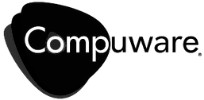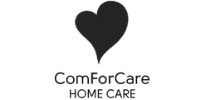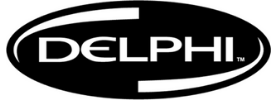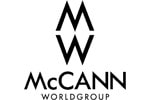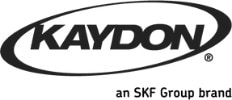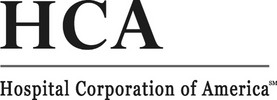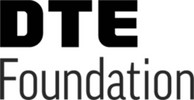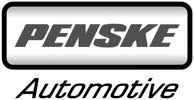
How to Improve Your Website Conversion Rate and ROI
Many businesses invest heavily in digital marketing—SEO, paid ads, email campaigns—only to see minimal results. While they succeed in driving traffic to their websites, poor website conversion rates often prevent that traffic from turning into leads or paying customers. The truth is, traffic alone doesn't equal success—your website conversion rate is what ultimately determines your ROI.
The missing piece is your website's ability to convert visitors into action-takers. That's where your website conversion rate becomes a critical metric. Whether you're trying to generate leads, capture signups, or close sales, optimizing for conversion ensures you're getting more value from the traffic you already have.
This article explores how to improve your website conversion rate and increase your marketing return on investment (ROI). Along the way, we'll demonstrate how this strategy aligns with Google's EEAT principles—Experience, Expertise, Authoritativeness, and Trustworthiness—and why it's essential for long-term digital success.
What Is a Website Conversion Rate?
Your website conversion rate is the percentage of visitors who complete a desired action—such as filling out a form, subscribing to a newsletter, downloading a resource, or making a purchase. It's one of the most important indicators of your website's effectiveness because it connects visitor engagement directly to business results.
Unlike traffic volume, which simply measures how many people land on your site, conversion rate tells you how many of those visitors are actually taking meaningful steps toward becoming customers. It reflects the quality of the user experience, the clarity of your messaging, and the strength of your calls to action.
Improving your website conversion rate means getting more value from the traffic you already have. Instead of increasing your advertising budget or relying solely on new traffic sources, you can grow your business by ensuring more visitors are moving through your funnel and converting into leads or customers.
The Impact of Website Conversion Rate on ROI
Your marketing ROI improves dramatically when your website is designed to convert. Here's how:
- Lower acquisition costs: More leads from the same budget.
- Greater efficiency: Less waste from unqualified traffic.
- Faster sales cycles: Optimized paths to conversion reduce drop-offs.
For example, if your site gets 10,000 visitors a month and converts at 2%, that's 200 leads. By increasing your website conversion rate to 3%, you gain 300 leads—a 50% increase with no change in traffic volume.
Why Conversion Rate Matters More Than Traffic
It's easy to assume that more website traffic automatically leads to more sales—but that's only true if your site is built to convert. Without a clear path to action, most visitors will leave without engaging. Driving high volumes of traffic without addressing conversion is like pouring water into a leaky bucket. You'll spend more on advertising, yet see little return if your site isn't optimized for results.
Conversion rate optimization (CRO) shifts the focus from quantity to quality. Rather than chasing more clicks, CRO helps you extract greater value from your existing audience. It's one of the most cost-effective ways to grow because you're not relying on additional marketing spend to see improved outcomes. CRO works across all traffic sources—organic, paid, referral—ensuring every visitor has a higher likelihood of converting.
More importantly, CRO enhances the user experience. A well-optimized site is easier to navigate, more persuasive in its messaging, and more trustworthy in its presentation. These factors not only boost conversions but also build long-term brand loyalty. When users feel confident and supported throughout their journey, they're far more likely to become repeat customers or brand advocates.
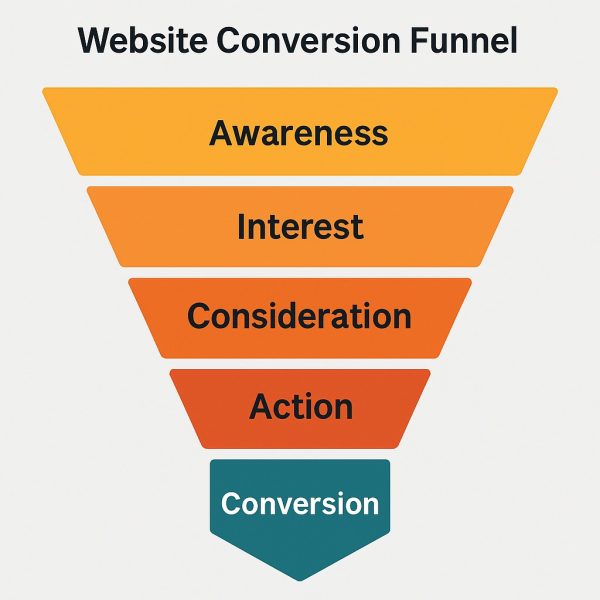
Key Strategies to Improve Your Website Conversion Rate
Improving your website conversion rate isn't about guessing what might work—it's about applying proven strategies that are grounded in data and user behavior. Whether you're generating leads, selling products, or booking appointments, the tactics you use to influence visitor action can make or break your digital success.
So, how do you optimize your website to improve your conversion rate? Here are some proven strategies:
1. Clear and Compelling Call-to-Actions (CTAs)
Use buttons and links that clearly tell users what to do. Examples include:
- "Get a Free Consultation"
- "Download Your Guide Now"
- "Request a Quote"
Make sure CTAs are easy to find and visually stand out on the page.
2. Simplified Navigation
A cluttered website can confuse users. Simplify your menus and page layout to help users find what they need quickly and reduce friction in the conversion path.
3. A/B Testing
Test variations of your landing pages, CTAs, and headlines to see which versions perform better. Small changes often lead to significant improvements in your website conversion rate.
4. Mobile Optimization
With the majority of users now on mobile devices, your website must be mobile-friendly. Fast load times, responsive design, and easy-to-use forms are critical to capturing mobile conversions.
5. Build Trust with Social Proof
Showcase testimonials, case studies, client logos, or trust badges (like SSL security) to reassure visitors and encourage conversions.
Applying these strategies is the first step to turning your website into a high-performing conversion tool. But optimization isn't a one-time fix—it's an ongoing process that requires consistent monitoring and improvement. In the next section, we'll explore the key metrics that help you evaluate your website conversion rate and identify where to focus next.
Top Metrics to Monitor Website Conversion Rate Performance
Tracking the right metrics is essential for understanding and improving your website conversion rate. Here are a few you should regularly review:
- Conversion Rate: The percentage of users who complete a desired action.
- Bounce Rate: The percentage of visitors who leave your site after viewing only one page.
- Average Session Duration: How long users stay on your site—a longer duration often suggests better engagement.
- Form Abandonment Rate: How many users start but don't complete forms.
- Exit Pages: Pages where users most often leave your site.
By reviewing these metrics using tools like Google Analytics and heatmaps (e.g., Hotjar), you can identify weak points in the user journey and make informed improvements.
Real-World Example: How One Company Increased Its Website Conversion Rate
One of SmartFinds Marketing's clients, a global leader in Content Delivery Network (CDN) services, had been relying heavily on sales outreach but struggled with low-quality lead generation and under performing digital channels. Despite investing over $1 million in their sales infrastructure, they lacked a cohesive marketing strategy and an optimized web presence. Their website ranked poorly among competitors, and the user experience didn't support conversion-focused behaviors.
SmartFinds stepped in with a comprehensive plan built around AI-enhanced conversion rate optimization. Our team led the redesign of their website with CRO principles at the forefront—clear navigation paths, frictionless forms, mobile responsiveness, and persuasive CTAs tailored to each stage of the buyer's journey. We also implemented a multi-channel marketing strategy that included SEO, content marketing, LinkedIn outreach, paid advertising, press releases, and email campaigns to drive engagement and lead generation.
The results were transformational:
- +198% increase in global leads
- +94% increase in U.S. leads
- From 2.56 to 4.97 leads per day in the U.S. market
- Significant improvement in search visibility and organic traffic
- Higher-quality leads that aligned with the sales team's ideal customer profile
This case highlights the power of combining technical expertise, user-centered design, and a full-funnel digital marketing strategy. By focusing on improving the website conversion rate, SmartFinds Marketing helped the client unlock the full potential of their online presence and dramatically boost their marketing ROI.
Download the conversion rate optimization (CRO) lead generation case study.
Frequently Asked Questions
We get a lot of questions about how to improve website conversion rates, what to expect, and how to measure success. Below are answers to some of the most common questions business owners and marketers ask us about conversion optimization.
What is a good website conversion rate?
It varies by industry, but a typical benchmark is between 2% to 5%. Top-performing websites often exceed 10%, depending on their niche, audience, and how well their site is optimized for user experience and trust.
How long does it take to improve my website conversion rate?
Some CRO improvements—like adjusting a call-to-action or simplifying a form—can show results within weeks. However, most businesses see consistent and measurable gains over a 3–6 month period with ongoing testing and refinement.
Do I need a website redesign to increase my conversion rate?
Not necessarily. In many cases, you can significantly improve your website conversion rate through targeted updates such as better messaging, visual hierarchy, layout adjustments, and testing different user journeys. A full redesign is only recommended if the existing structure is outdated or not scalable.
How do I measure whether my website conversion rate is improving?
You can track performance using tools like Google Analytics, Hotjar, or Microsoft Clarity. Look specifically at your conversion rate across landing pages, traffic sources, form completions, and user flow reports. Also watch for improvements in bounce rates, time on site, and engagement metrics.
What types of businesses benefit most from conversion rate optimization?
Any business with a digital presence can benefit—whether you're a B2B company generating leads, an e-commerce store increasing checkouts, or a service provider booking consultations. CRO is especially valuable for businesses investing in paid traffic or struggling to scale revenue from existing website visitors.
Still have questions about your own website conversion rate? Let's schedule a consultation and explore how SmartFinds Marketing can help you turn your traffic into measurable growth.
The Smart Path to a Higher Website Conversion Rate
Improving your website conversion rate isn't just a technical adjustment—it's a strategic move that directly impacts your business's bottom line. Rather than constantly chasing more traffic, smart businesses optimize the experience for the visitors they already have. This approach leads to lower acquisition costs, more qualified leads, and a more efficient digital sales process.
Conversion rate optimization isn't one-size-fits-all. It takes the right blend of design, messaging, testing, and analytics to create a website that consistently converts. At SmartFinds Marketing, we bring 35+ years of marketing experience and a data-driven mindset to every CRO engagement. Our team combines AI tools with human insight to deliver tailored strategies that help businesses of all sizes improve results and scale intelligently.
Are you ready to turn more of your traffic into leads and customers? Let's talk about how SmartFinds Marketing can optimize your website conversion rate and help you achieve measurable ROI. Contact us today to get started.
Contact Us
Author: Melih Oztalay




